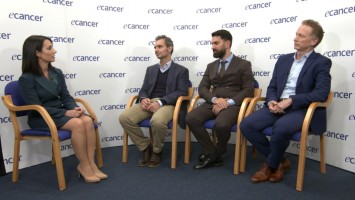The role of afatinib in patients with EGFR NSCLC
Dr Antonio Passaro - European Institute of Oncology, Milan, Italy
This morning we presented the results of the phase IIIb trial evaluating the role of afatinib in patients with EGFR positive non-small cell lung cancer. The trial was very interesting because it evaluated the real world practice and the patients with common and uncommon mutations. We evaluated an efficacy endpoint and a safety endpoint. For the efficacy endpoint we evaluated the progression free survival and the time to symptomatic progression. The results were very interesting because we evaluated overall 479 patients treated all with afatinib in first, second and also in third line.
Patients with an ECOG PS2 were allowed and achieved a survival of 6 months, as for the patients treated in third line.
Interesting data came from the overall that the progression free survival was 30.3 months and the time to symptomatic progression was 14.9. The data about uncommon mutations was heterogeneous; indeed we have sensitive and resistant uncommon mutations and in the future we will evaluate the role of uncommon mutations in the afatinib pooled analysis of two big trials.
This data today had some new information about clinical practice confirming the role of EGFR tyrosine kinase inhibitors, in this case afatinib, and focussed on the attention of the difference from clinical practice and the clinical trial because in clinical practice we have a more heterogeneous patient population.
When will we see this in the clinic?
In the clinic today we just evaluated patients with different characteristics, different mutations, different ECOG PS2 and these data only confirmed the heterogeneity of clinical practice and hides the attention of the randomised clinical trials that are very strict as inclusion criteria.
What’s the toxicity profile like?
The toxicity profile overlapped the results of the LUX-Lung 3 and LUX-Lung 6 randomised clinical trials. Overall 54 patients reduced the dose one step to 30mg and 18% of patients reduced two steps to 20mg. 8% of patients discontinued the treatment for toxicity, in the majority for diarrhoea.
Is there anything important to add?
The importance is that we are evaluating in the future the pooled analysis of two or three international clinical trials with the same characteristics.








